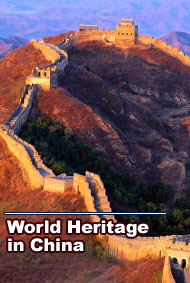
|
|
|
Yueju Opera
Origin Cantonese Opera originated at the end of the Ming Dynasty (1368-1644) and developed through the following centuries. Formerly, the music was almost identical to older and more established operatic types, but in the past several years it has become a blend of conventional patterns and fragments from Cantonese folk melodies, popular songs, modern Cantonese instrumental compositions and even Western tunes. Cantonese Opera came into being on the basis of local aboriginal theatre combined with vocal melody from other regions and folk singing and storytelling skills. Its singing and dialogue are all in Cantonese dialect. Its music consists of innumerable melodies and tunes. Based on Banghuang Tune, it combines Kun Tune, Yiyang Tune, Guangdong Tune with Guangdong folk music and popular tunes. Artistic value In Cantonese Opera, the music isn't the most important part - the lyrics are. In Cantonese Opera the writers put words into this pool of melodies and tunes. One song may contain many melodies, and it is up to the singer to add his or her own personal variation and style to the melody when they sing it. Traditional Chinese instruments such as the erhu, butterfly harp, pipa, flute, and percussion make up the orchestra. The percussion alone consists of many different drums and cymbals. The percussion is responsible for the overall rhythm and pace of the music, while the erhu leads the orchestra. Now, Cantonese Opera has incorporated many western instruments such as the cello, saxophone, and even the violin that is often used in place of the erhu. Originally its characters were divided into 10 categories, but later on reduced to six: civilian and military, male scholar-lover, major female, secondary female, clown and military male. The repertoire has 5,000 to 6,000 traditional pieces. Six major roles: Wenwusheng (man of both letters and martial arts), Xiaosheng (Personated young man), Wu sheng (cavalier), Chousheng (clown), Zhengyinhuadan (female characters) and Erbanghuadan (young woman). There are two types of Cantonese Opera plays. One is called "Mun," and the other is called, "Mo." Mo means martial arts. Characters in Mo plays are usually generals or warriors. Mo plays are action-packed and intricately choreographed, often using weapons. The costumes for Mo plays are very complicated and heavy. Mun means intellectual, polite, and cultured. These are the plays whose characters are either scholars, royalty. Mun plays tend to be dramatic and the movements are soft and slow. Instead of using weapons, performers show off their abilities in water sleeves movements. This type of play focuses more on facial expression, tone of voice, and meaning behind the movements. The background stories are based on a wide range of subjects, including romantic encounters, historical events, fictionalized episodes, ghost stores, patriotic happenings, moral teachings, famous classics, pseudo-religious tales and heroic epics. Beyond entertainment, the operas educate people about many facets and levels of the Chinese language, belief system, society, arts and history. Cantonese Opera costumes provide socio-historical contexts and are designed for symbolic and aesthetic effect. In addition to Chinese traditional instruments, such as the erxian and gaohu bowed string instruments and the sanxian and yueqin plucked string instruments, its orchestra has adopted Western instruments such as violin, saxophone, cello and double bass. In acting, stage scenery and lighting, it has borrowed techniques used in modern drama, Western opera and film, and gradually formed its own distinctive features. |